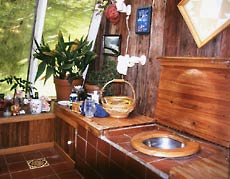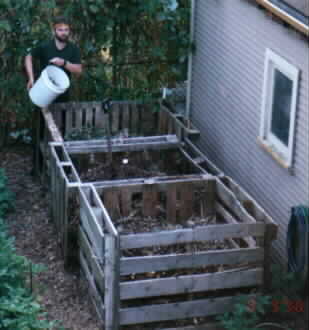
Steve’s Composting Sawdust Toilet
On our homestead, we have greatly reduced our water usage by eliminating the flush toilet. The idea of polluting fresh drinking water with humanure is an odd concept, but widely held as the only solution. At the same time, we have embarked on a process that builds topsoil depth and quality. By combining a sawdust toilet with a compost bin, we are reducing our “waste” footprint and creating valuable healthy soil.
A sawdust toilet is ONE of three components. The system will NOT work without all components, which are:
1) THE TOILET ITSELF. (A sawdust toilet is a collection toilet – the composting takes place in a separate outdoor bin.)
2) A COMPOST BIN (a three-chambered bin is recommended). See for example the Jenkins garden gallery and range of products…
…..or you can build them yourself as in this photo.

Off -Grid toilet Compost setup
3) COVER MATERIALS (such as sawdust, leaf mould, peat moss, weeds, hay, straw, leaves,or rice hulls). Cover materials are critical to the success of a sawdust toilet. NOTE: Food scraps, fats, oils, meats, and any other discarded organic material you produce should also go into the humanure compost pile.
3 Responses
I love your toilet – looks like you used a stainless steel bin to gather the waste – great idea.I like the fold down seat cover too.
I’ve been using a sawdust toilet for my construction site for about 9 months now. Just throw in some sawdust from the cut table after the business is done and no oder whatsoever. When 5 gallon bucket is 3/4 full, I take it to my compost pile per Mr. Jenkins book on humanure. Works like a charm here in the states.
Variations on the composting toilet combine the digester and throne, eliminating the transport cycle. I observed one in a public park, and can testify to the odorless performance of the dry composting system.
Hopefully, acceptance will come quicker than rationing of potable water.